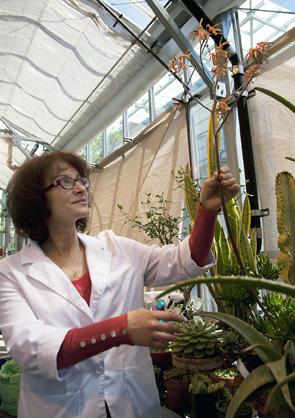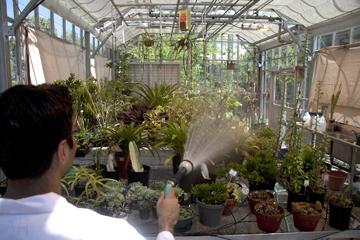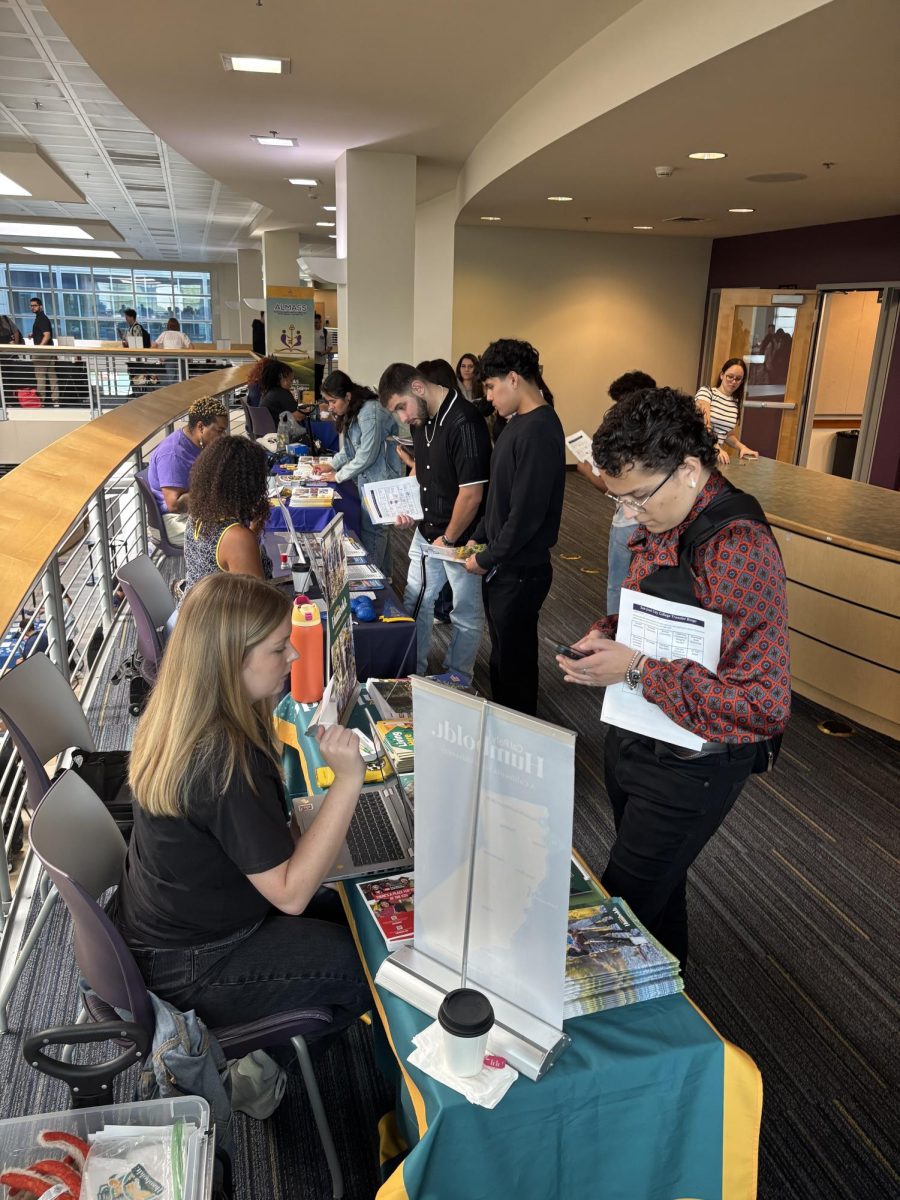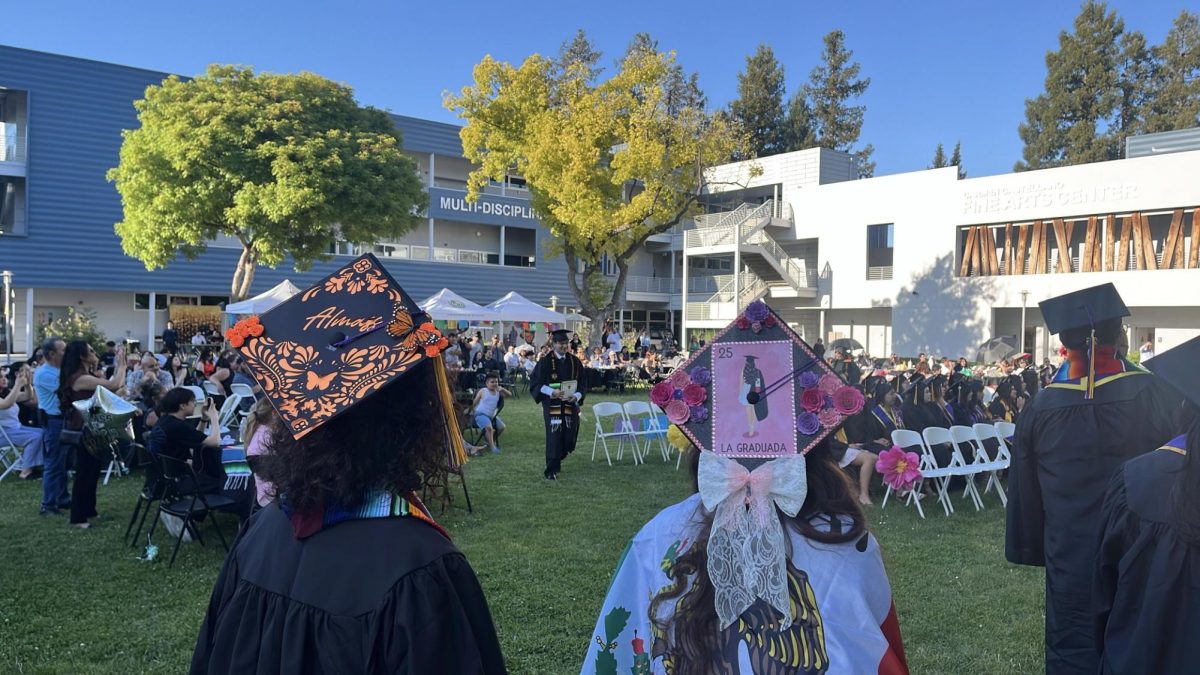

Walking into the greenhouse, the temperature hovers near 86 degrees Fahrenheit.
Plumerias, orchids and bromeliads sit side-by-side on tables throughout the room as the sun beats down on the foliage.
The air is stuffy and smells earthy.
Although the temperature is uniform throughout the structure, the inhabitants of this greenhouse live in extremely different environments in the wild.
There is a tropical paradise on one side, and there’s a desert oasis on the other.
“The microhabitats of this greenhouse range from tropical to near-desert conditions,” biology professor Peter D’Eliscu said. “Our greenhouse is midsized to large for the community colleges around us and is the envy of some.”
This campus gem houses many unusual species, including rare bromeliads, tropical plumerias and orchids, which are not artificial hybrids.
“We have a wide variety of things like Euphorbians, they look like cactus, succulents,” D’Eliscu said. “We have some interesting lower plants like liverworts. We have some different kinds of ferns.”
D’ Eliscu said he has used the facility for orchid and aquatic fern experiments with students.
“The greenhouse … supports some experiments with botany classes and biology majors programs,” D’Eliscu said. “The plants serve as a reference collection for the taxonomy and cultivation aspects of these and other courses.”
Student aide Hasham Saqib, 20, biotechnology major, said the plants grown in the greenhouse are tailored to the biology sections offered at SJCC.
“They (students) can see them, feel and touch them,” Saqib said.
The student assistant position is open to all current students, and lab coordinator Anna Spokoyny said they look for the “best of the best.”
The greenhouse is a carefully controlled environment with an automatic irrigation system and temperature controls, but lab assistant Margarita Gasparyan said regulating the greenhouse is still complicated.
“We still have to hand water some plants,” Gasparyan said.
Plants such as the carnivorous pitcher plants must be watered by hand with deionized water.
“Our greenhouse is mostly automated for climate control, with extreme conditions adjusted by hand,” D’Eliscu said. “Watering is semi-automated for some areas, and watered and monitored in others.”
Gasparyan said the temperature is maintained between 77 and 86 degrees Fahrenheit.
Built in 2006, the greenhouse was once just a pipe dream.
“We thought it was wishful thinking,” D’Eliscu said. “The contractors and the budget people for the building said, ‘Sure, we can do that.’”
Although the greenhouse is ideal for growing a variety of plant species, it is also an ideal environment for diseases.
“People (staff) ask to put their plants in the greenhouse, and we have to say no,” D’Eliscu said. “Anytime we bring in whitefly, fungus, other kinds of bacteria and even viruses, it might spread to the rest of the greenhouse. We main- tain pretty tight control on who has what flowers in there.”
Current biology students will receive a tour of the greenhouse during the semester, and students interested in the student aide position can contact Gasparyan or Spokoyny in the Science Building.






